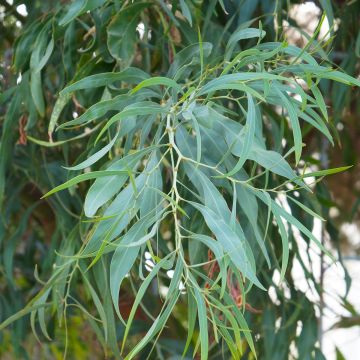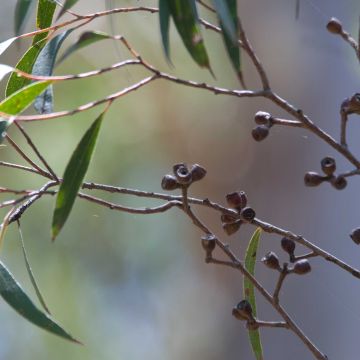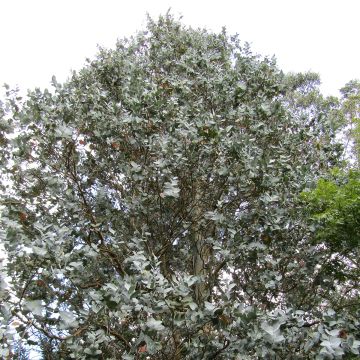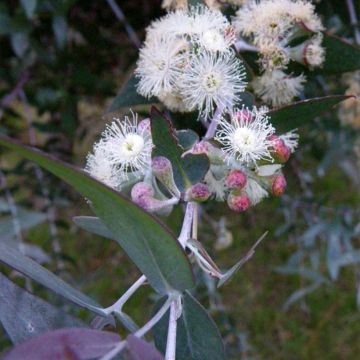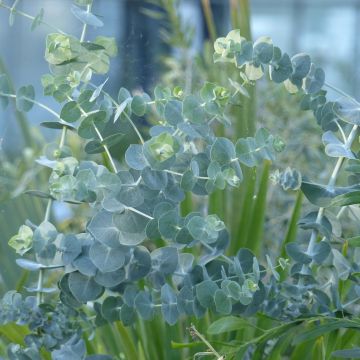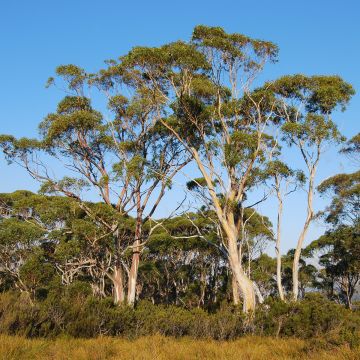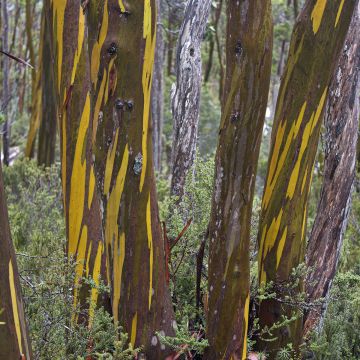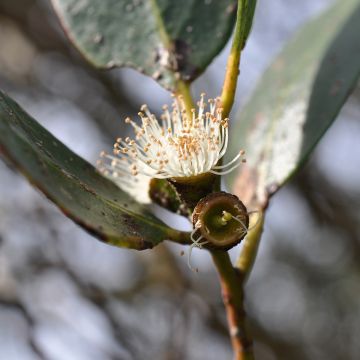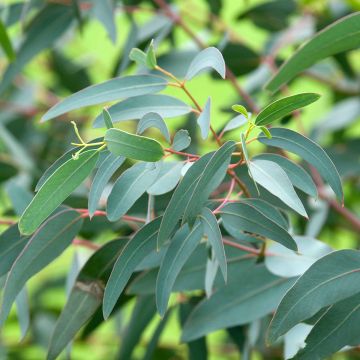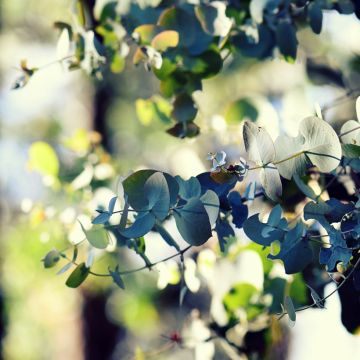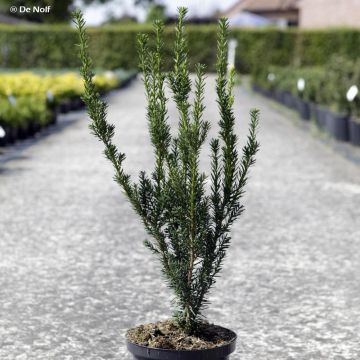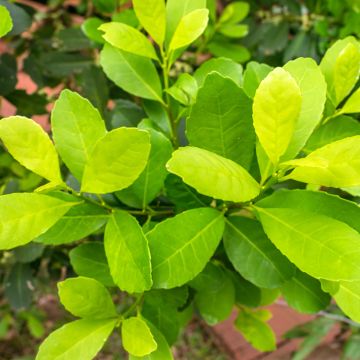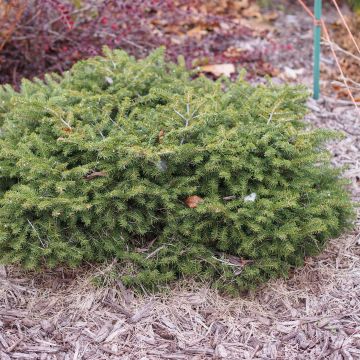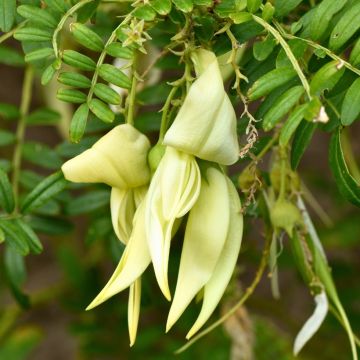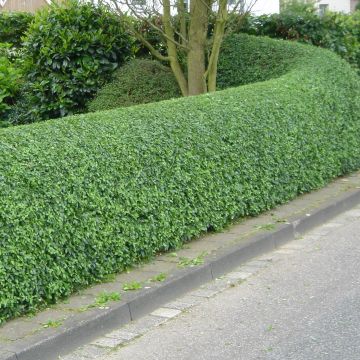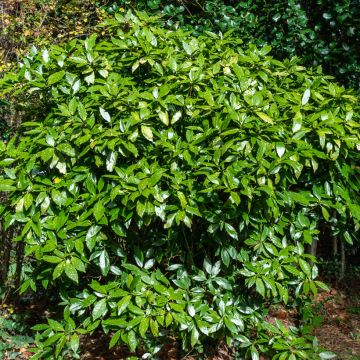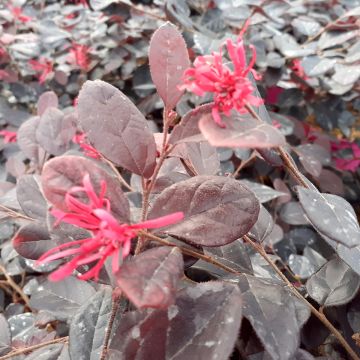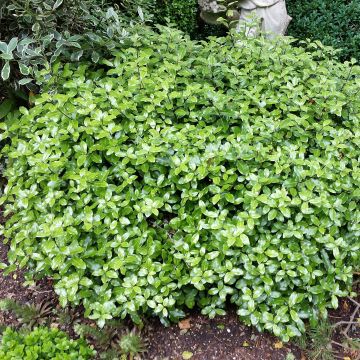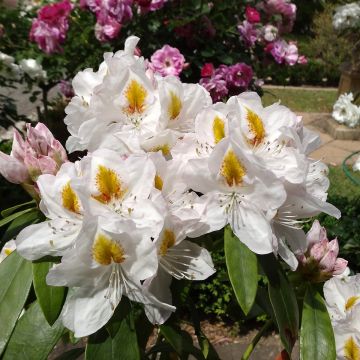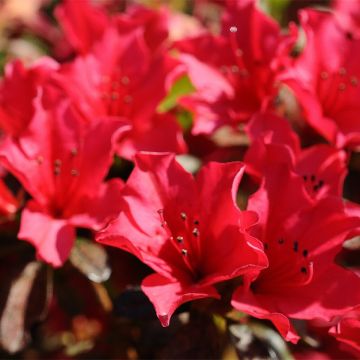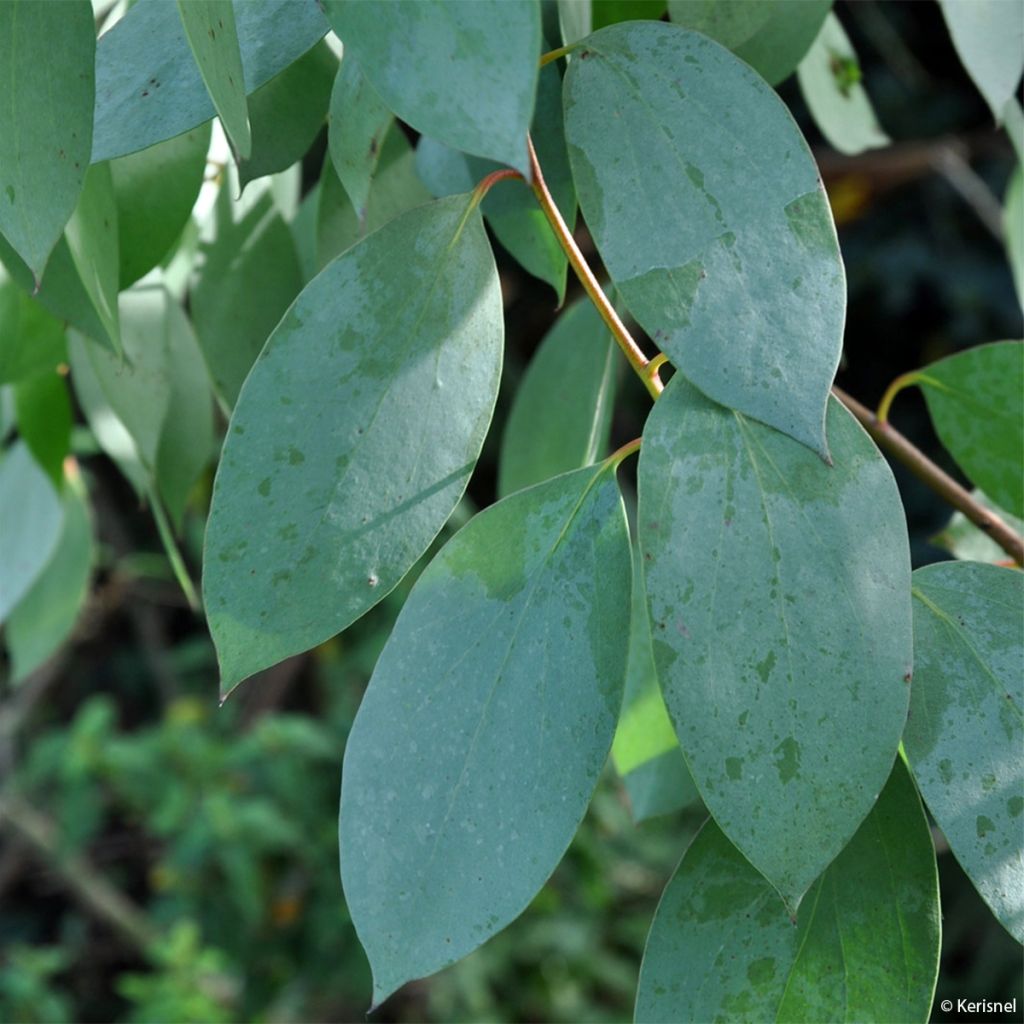

Eucalyptus stellulata
Eucalyptus stellulata
Eucalyptus stellulata
black mallee
My Eucalyptus stellulata arrived, the leaves dried out despite being placed in a warm environment and watered. It has lost all its leaves completely dry, I don't think this is normal.
lynn, 21/01/2025
This item cannot be shipped to the selected country
Delivery charge from €5.90
More information
Schedule delivery date,
and select date in basket
This plant carries a 24 months recovery warranty
More information
We guarantee the quality of our plants for a full growing cycle, and will replace at our expense any plant that fails to recover under normal climatic and planting conditions.
From €5.90 for pickup delivery and €6.90 for home delivery
Express home delivery from €8.90.
Does this plant fit my garden?
Set up your Plantfit profile →
Description
Eucalyptus stellutata is an Australian species appreciated for its decorative bark, umbel habit, cold resistance, and late-winter flowering with white pompoms. It owes its nickname "Black mallee" to the colour of its bark, black at the base. This beautiful evergreen tree also has fine-textured, grey-green-blue foliage that offers a beautiful presence throughout the year. This eucalyptus will adapt to many regions and all types of soil, even clayey and humid. Given its growth, it should be reserved for large gardens where it will be a very beautiful subject in isolation.
Eucalyptus stellutata is a beautiful tree of the myrtle family, native to the mountains of southeastern Australia, where it is often found close to watercourses and marshy areas. It grows moderately fast for the genus, developing several trunks from its base, topped by a wide, fairly sparse crown with a spreading and slightly weeping habit. It will reach a height of about 15 m (49 ft 2 in) and a spread of 8-9 m (26 ft 2 in-29 ft 6 in) at maturity, under good conditions. A well-established specimen will withstand brief frosts of around -14°C (6.8 °F). This may vary depending on the duration of the frost and the rise in temperatures during the day.
The reddish young branches of this eucalyptus bear evergreen foliage in winter, composed of long, narrow, pointed, leathery leaves that are initially green and then take on a more glaucous to greyish colour. They are slightly aromatic and emit a scent of peppermint when crushed. Flowering occurs in February-March on plants that are a few years old. These are actually petal-less, round flowers, composed of a multitude of tightly packed white-cream stamens, resembling pompoms. They bloom between the leaves, grouped in threes along the branches, and are followed by the formation of large, green, cone-shaped fruits that become brown when ripe. The old, black bark peels off in large flakes every year, revealing a brand-new bark, streaked with white and olive green.
Eucalyptus stellutata is a beautiful subject to place prominently in a large garden. It brings an undeniable touch of exoticism to the landscape and structures the garden in all seasons. To dress its base, choose plants that tolerate dry soil such as scabious, candytuft, centaureas, catmints, sun roses, rue, bear's breeches, rockroses, or calamint nepeta for example. It seems that these very drought-tolerant species can thrive near the highly competitive roots of the Eucalyptus.
Report an error about the product description
Eucalyptus stellulata in pictures
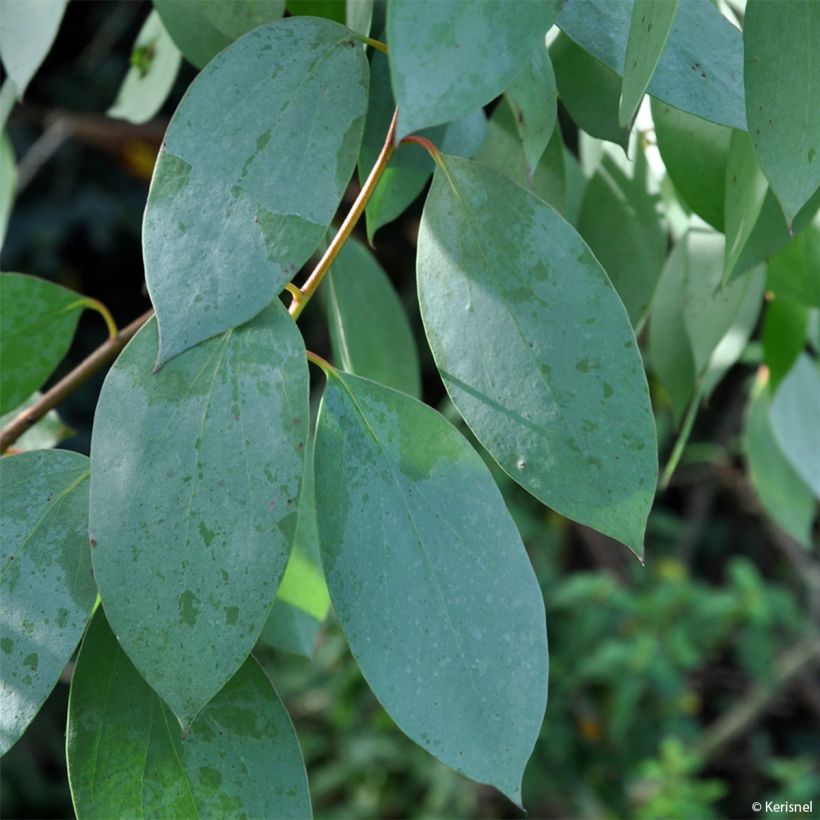

Plant habit
Flowering
Foliage
Botanical data
Eucalyptus
stellulata
Myrtaceae
black mallee
Australia
Other Eucalyptus
Planting and care
Eucalyptus stellutata is best planted at the beginning of spring in cool regions and the beginning of autumn in dry and hot climates. Plant it in a well-prepared, moist, occasionally dry, not too chalky, soil, in a warm and sunny location. A mature specimen is hardy down to -14°C (6.8 °F) in these conditions. Young plants are more sensitive to severe frosts, especially if the frost persists for several days and the soil is moist. In regions that are not too harsh, you can plant it directly in the ground, improving drainage by adding coarse sand, pumice or non-chalky gravel. Water regularly for the first two years, especially in summer, and during particularly dry and hot periods. Pruning is not necessary, and even discouraged, allowing the beautiful habit of this superb eucalyptus to develop. However, it is well tolerated after flowering or at the end of summer. It is possible to train the eucalyptus to have a single trunk, by selecting the best positioned one and cutting the others flush.
Gum trees are useful for draining wet areas, as they are heavy water consumers even in winter. However, once well established, they become quite resistant to drought (to varying degrees depending on the species and varieties) and thrive rather well in Mediterranean-type climates.
Planting period
Intended location
Care
-
, onOrder confirmed
Reply from on Promesse de fleurs
Evergreen shrubs
Haven't found what you were looking for?
Hardiness is the lowest winter temperature a plant can endure without suffering serious damage or even dying. However, hardiness is affected by location (a sheltered area, such as a patio), protection (winter cover) and soil type (hardiness is improved by well-drained soil).

Photo Sharing Terms & Conditions
In order to encourage gardeners to interact and share their experiences, Promesse de fleurs offers various media enabling content to be uploaded onto its Site - in particular via the ‘Photo sharing’ module.
The User agrees to refrain from:
- Posting any content that is illegal, prejudicial, insulting, racist, inciteful to hatred, revisionist, contrary to public decency, that infringes on privacy or on the privacy rights of third parties, in particular the publicity rights of persons and goods, intellectual property rights, or the right to privacy.
- Submitting content on behalf of a third party;
- Impersonate the identity of a third party and/or publish any personal information about a third party;
In general, the User undertakes to refrain from any unethical behaviour.
All Content (in particular text, comments, files, images, photos, videos, creative works, etc.), which may be subject to property or intellectual property rights, image or other private rights, shall remain the property of the User, subject to the limited rights granted by the terms of the licence granted by Promesse de fleurs as stated below. Users are at liberty to publish or not to publish such Content on the Site, notably via the ‘Photo Sharing’ facility, and accept that this Content shall be made public and freely accessible, notably on the Internet.
Users further acknowledge, undertake to have ,and guarantee that they hold all necessary rights and permissions to publish such material on the Site, in particular with regard to the legislation in force pertaining to any privacy, property, intellectual property, image, or contractual rights, or rights of any other nature. By publishing such Content on the Site, Users acknowledge accepting full liability as publishers of the Content within the meaning of the law, and grant Promesse de fleurs, free of charge, an inclusive, worldwide licence for the said Content for the entire duration of its publication, including all reproduction, representation, up/downloading, displaying, performing, transmission, and storage rights.
Users also grant permission for their name to be linked to the Content and accept that this link may not always be made available.
By engaging in posting material, Users consent to their Content becoming automatically accessible on the Internet, in particular on other sites and/or blogs and/or web pages of the Promesse de fleurs site, including in particular social pages and the Promesse de fleurs catalogue.
Users may secure the removal of entrusted content free of charge by issuing a simple request via our contact form.
The flowering period indicated on our website applies to countries and regions located in USDA zone 8 (France, the United Kingdom, Ireland, the Netherlands, etc.)
It will vary according to where you live:
- In zones 9 to 10 (Italy, Spain, Greece, etc.), flowering will occur about 2 to 4 weeks earlier.
- In zones 6 to 7 (Germany, Poland, Slovenia, and lower mountainous regions), flowering will be delayed by 2 to 3 weeks.
- In zone 5 (Central Europe, Scandinavia), blooming will be delayed by 3 to 5 weeks.
In temperate climates, pruning of spring-flowering shrubs (forsythia, spireas, etc.) should be done just after flowering.
Pruning of summer-flowering shrubs (Indian Lilac, Perovskia, etc.) can be done in winter or spring.
In cold regions as well as with frost-sensitive plants, avoid pruning too early when severe frosts may still occur.
The planting period indicated on our website applies to countries and regions located in USDA zone 8 (France, United Kingdom, Ireland, Netherlands).
It will vary according to where you live:
- In Mediterranean zones (Marseille, Madrid, Milan, etc.), autumn and winter are the best planting periods.
- In continental zones (Strasbourg, Munich, Vienna, etc.), delay planting by 2 to 3 weeks in spring and bring it forward by 2 to 4 weeks in autumn.
- In mountainous regions (the Alps, Pyrenees, Carpathians, etc.), it is best to plant in late spring (May-June) or late summer (August-September).
The harvesting period indicated on our website applies to countries and regions in USDA zone 8 (France, England, Ireland, the Netherlands).
In colder areas (Scandinavia, Poland, Austria...) fruit and vegetable harvests are likely to be delayed by 3-4 weeks.
In warmer areas (Italy, Spain, Greece, etc.), harvesting will probably take place earlier, depending on weather conditions.
The sowing periods indicated on our website apply to countries and regions within USDA Zone 8 (France, UK, Ireland, Netherlands).
In colder areas (Scandinavia, Poland, Austria...), delay any outdoor sowing by 3-4 weeks, or sow under glass.
In warmer climes (Italy, Spain, Greece, etc.), bring outdoor sowing forward by a few weeks.

































